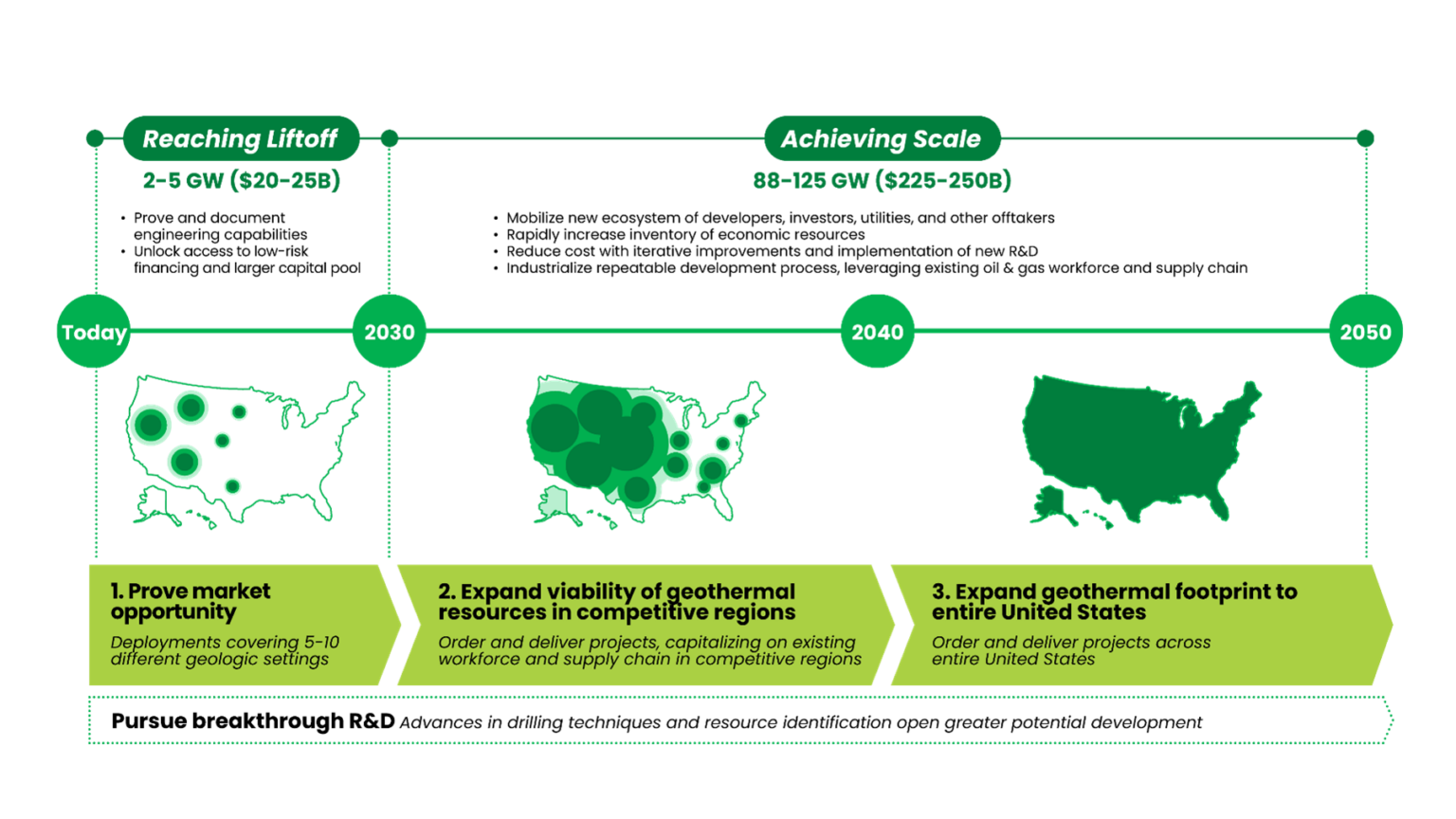The pathway to:
NEXT-GENERATION GEOTHERMAL POWER COMMERCIAL LIFTOFF
Geothermal power technology has shown compelling advances that can enable it to become a key contributor to secure, domestic, decarbonized power generation for the U.S. as a source of clean firm power.
Next-gen geothermal vastly expands the total resource available for geothermal power generation and creates a unique value proposition as a clean firm technology with the potential for flexible generation/energy storage, a minimal footprint, and broad geographic availability.
Next-gen geothermal approaches leverage technologies developed by oil & gas to engineer humanmade reservoirs from ubiquitous hot rock, rather than hunting for naturally-occuring reservoirs in unique locations. In a world where the US grid will need 700-900 GW of additional clean firm capacity by 2050, next-gen geothermal could provide 90 GW by 2050, and up to 300 GW depending on the development of storage capabilities and other emerging technologies.

Recent cost improvements show a credible path to liftoff…
Recent technical successes, particularly in drilling, indicate the industry is on track to an average cost of $60-70/MWh by 2030 and the Enhanced Geothermal Shot™ target of $45/MWh by 2035.

…but key challenges need to be tackled.
Challenges | Potential Solutions |
High up-front | · $5 billion in early development capital to finance a validation suite of first-of-a-kind deployments across varied geologies · Market signals, such as high-valued PPAs · In-field testing and innovation · New financial products to reduce drilling costs |
Perceived & actual operability risk | · Strategic siting and data dissemination from 10+ early deployments to show sustained power production |
Long & unpredictable development lifecycles | · Combining and streamlining of specific steps in permitting process, where authorized · Technology changes that allow streamlining · Centralization of expertise, where authorized |
Existing business models undervaluing | · Planning policies that incentivize higher-cost, higher-value power · Flexible geothermal operations · New offtake models |
Community opposition in | · Long-established induced seismicity and environmental monitoring best practices · Early, frequent, and transparent community engagement |
The U.S. Department of Energy, in partnership with other federal, state, and local agencies, has tools to address challenges to commercial liftoff and is committed to working with communities and the private sector to build the nation’s clean energy infrastructure in a way that meets the country’s climate, economic, and environmental justice imperatives.